EDUCATION
Southern Cross Uni Researchers AI-ming For Early Detection Of Skin Cancer

WORDS: Yasmine Nelson, Jessica Nelson PHOTOGRAPHY Made with AI and Supplied by SCU
Whether you’re catching waves at Snapper Rocks, enjoying a paddleboard adventure at Tallebudgera Creek, or taking a serene jog through Burleigh National Park, the Gold Coast is all about outdoor fun and soaking up the sunshine. With an average of 300 sunny days a year, it’s a lifestyle full of vitality and adventure but for some, there’s a downside.
Every year, more than 3,600 people in Queensland receive a diagnosis of melanoma, the most lethal type of skin cancer, while more than 350,000 cases of non-melanoma skin cancers undergo treatment. The economic burden on the Australian healthcare system from skin cancer exceeds $1.7 billion per year (Cancer Council Australia, 2023).
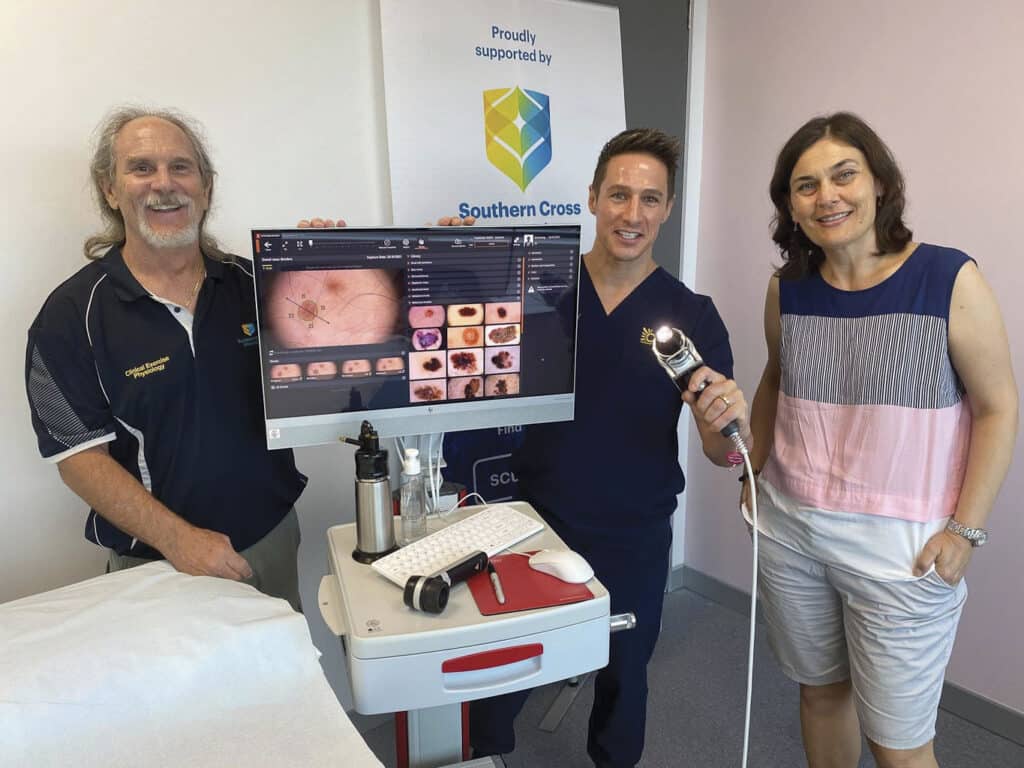
Associate Professor Mike Climstein (Left) with Michael Stapelberg and Dr Nela Rosic
As diagnostic tools and treatments for skin cancer advance, Southern Cross University has emerged as a leader in skin cancer research. A recent ground-breaking study, employing Artificial Intelligence (AI) technology, has unveiled a higher risk of melanoma among surfers, swimmers, and runners, prompting a deeper examination of the impact of outdoor activities on skin health.
The data showed swimmers face a 60 times higher risk of melanoma prevalence than the general population, while regular walkers/runners are 80 times more likely. The most concerning finding was for surfers, who are a staggering 120 times more prone to melanoma.
Recognising the need for efficient and affordable ways to detect skin cancers early in regular check-ups, the Southern Cross University team used a high-definition dermatoscope that included artificial intelligence. The scanner takes an image of a suspicious skin lesion and magnifies it under LED by up to 140X. This allows the clinicians the ability to identify small skin cancers, particularly important when they are melanoma.
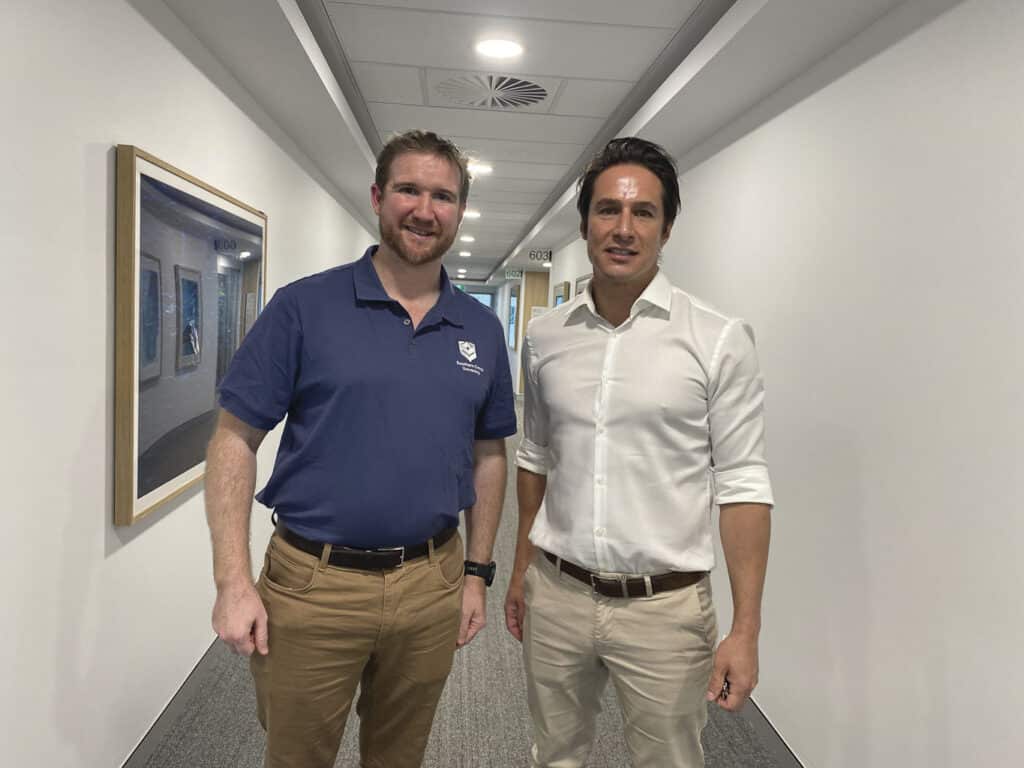
PhD Candidate Ian Miller with Dr Michael Stapelberg.
423 outdoor enthusiasts from Southern Queensland and Northern New South Wales participated in the voluntary trial. The checks were undertaken through project partner, Adjunct Associate Professor Michael Stapelberg, at the John Flynn Specialist Suites in Tugun.
The trial process included a survey, skin examination, followed by an automated predictive AI score. The scoring ranged from 0.00–0.20 “unsuspicious”; 0.21–0.49 “requiring clarification”, 0.50–1.00 “suspicious, observe with high attention.” Of the 423 participants, 48 lesions were identified clinically as suspicious of melanoma.
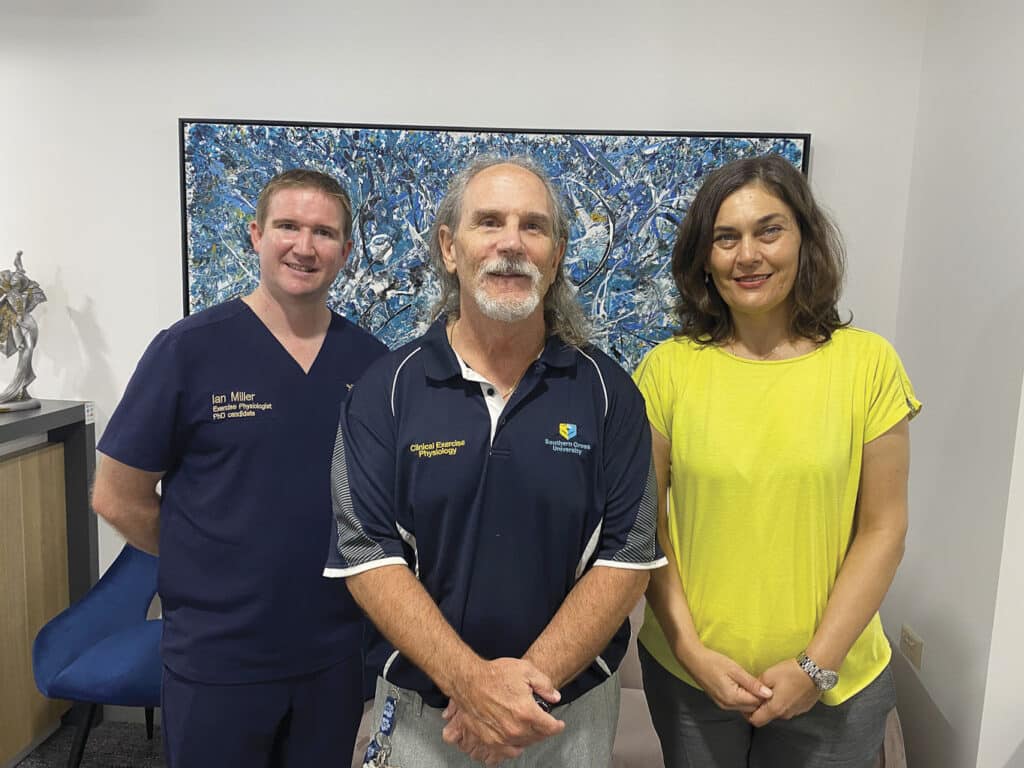
PhD candidate Ian Miller (left) with Associate Professor Mike Climstein and Dr Nela Rosic
Leading this research is Associate Professor Mike Climstein and his dedicated team, including Dr Nela Rosic, Adjunct Associate Professors Michael Stapelberg and Jeremy Hudson, Dr Paul Coxon, Associate Professor James Furness, Dr Joe Walsh and PhD candidate Ian Miller.
“There is widespread enthusiasm from clinicians to use artificial intelligence (AI) to help detect skin cancer, and these studies are promising, showing these tools may be equal to or even superior to specialists for the detection of malignant melanomas,” Professor Climstein said.
“Early detection rates would greatly benefit Australia, which has the world’s highest incidence of malignant melanomas per capita, with those residing in Queensland and Northern NSW at the highest risk. These AI tools may help in the difficult task of diagnosing early skin cancers, which often have a lack of obvious clinical features or may blend into sun-damaged skin,” said Professor Climstein.
Want to learn more about the study? You can find the full report “Implementation of artificial intelligence for the detection of cutaneous melanoma within a primary care setting: prevalence and types of skin cancer in outdoor enthusiasts” on PeerJ. https://peerj.com/articles/15737/
Surfs up, but so are the stats
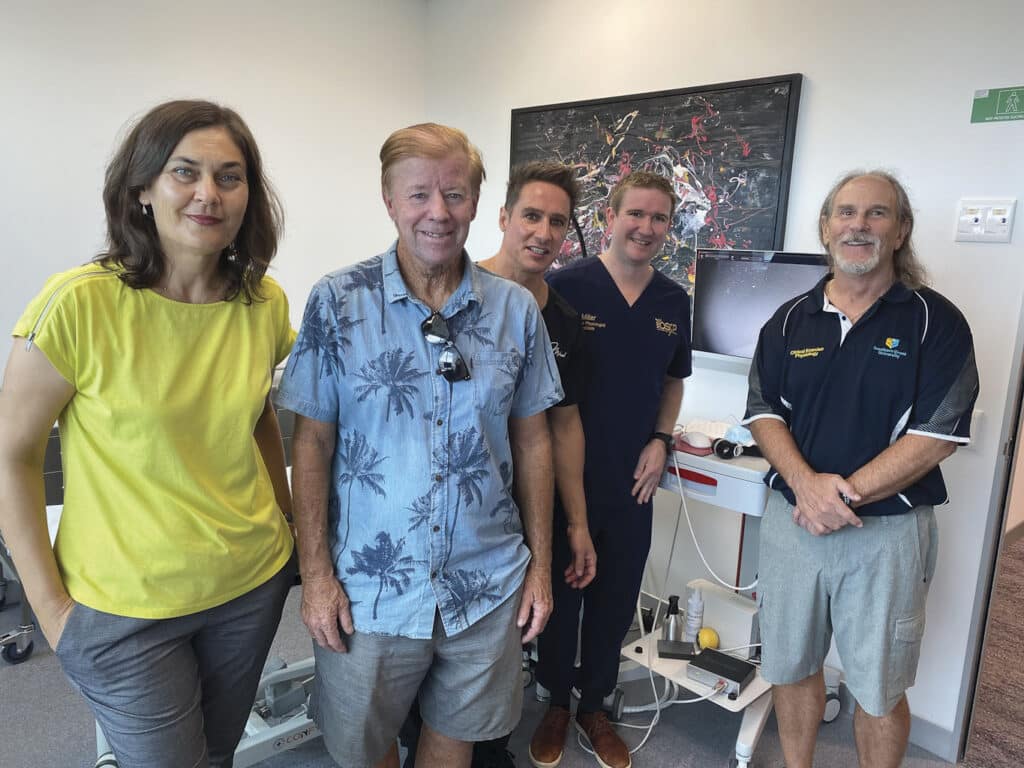
Dr Nela Rosic, Wayne ‘Rabbit’ Bartholomew, Adji Assoc Prof Michael Stapelberg, PhD candidate Ian Miller, Assoc Prof Michael Climstein.
There’s an estimated 2.7 million surfers and three million swimmers nationwide, and world-champion surfer and Gold Coast icon Wayne ‘Rabbit’ Bartholomew AM is no stranger to the deadly effects of skin cancer.
“I had my first melanoma 30 years ago, then in 2022 I had my second one. I believe regular skin checks have kept me alive. I wouldn’t have made my 40th birthday or seen my kids grow up if it wasn’t for regular skin checks, because early detection gives you every chance of survival, however late-stage detection is all too often fatal for Australians.”
“Both my melanomas were caught when they were primary and superficial before they even got to stage 1 – and the doctor took enough of a margin from each that I was given the all clear afterwards both times. I get my skin checked every three months, and I’m telling people not to procrastinate – don’t put off getting a skin check.
“Any breakthrough in treatment, technology and research that helps with early detection or very thorough diagnosis is incredibly valuable.”
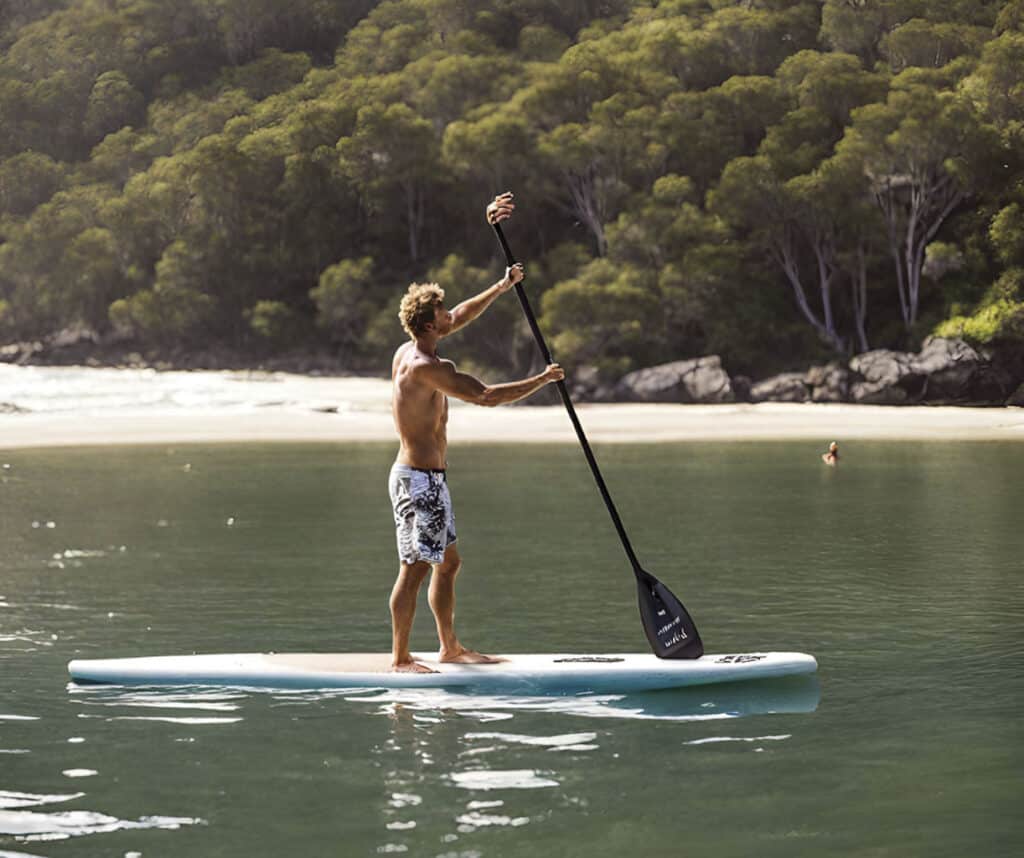
Here’s a man on a stand-up paddle board at Tallebudgera Creek after only using a few AI prompts
Tackling perceptions of AI
Southern Cross University’s foray into AI in healthcare extends beyond skin cancer research. Dr Lucy Shinners, an Intensive Care Nurse and academic at Southern Cross University, identified a considerable gap in research around perceptions of AI in the healthcare industry. Motivated by this, she focused her PhD around exploring these perceptions.
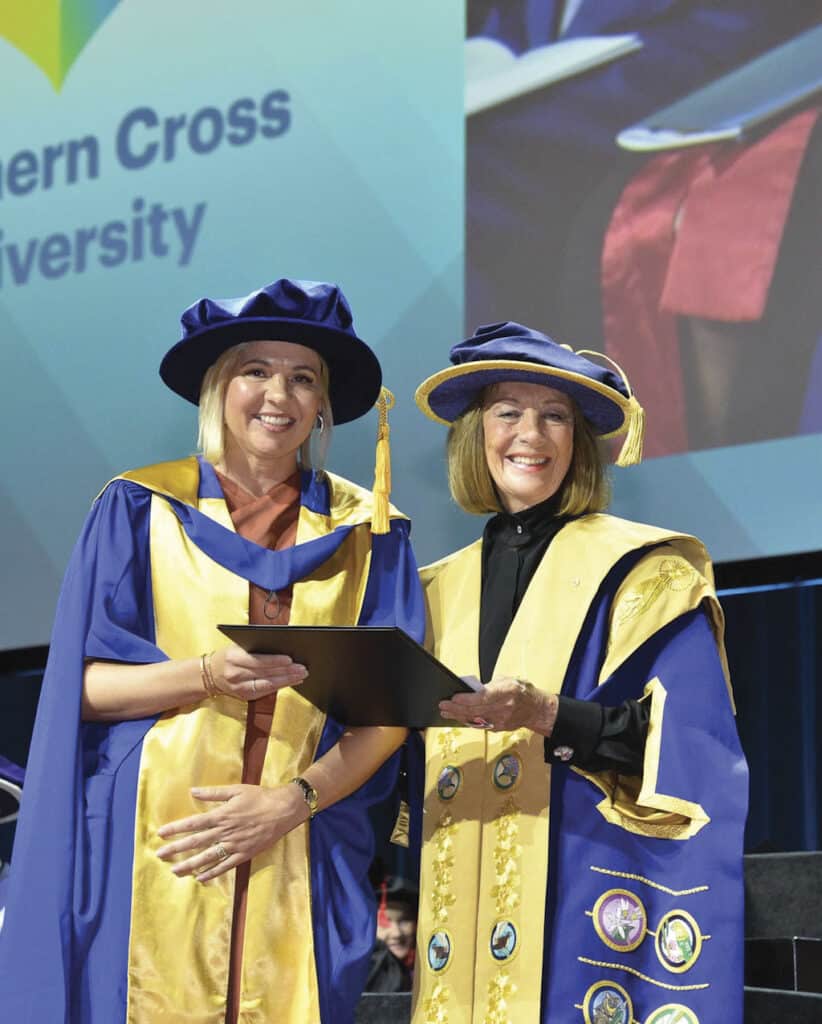
Dr Lucy Shinners recieving her testamur with University Chancellor Sandra McPhee AM.
A tool developed by Lucy as part of her PhD is now being used in 15 countries across the globe. The SHAIP tool – the first of its kind in the world – measures healthcare professionals’ perceptions of AI in the delivery of care.
“All around the world we are questioning how our health workforce is going to contribute to the development and application of AI and how we prepare them to do that,” she said.
“Some healthcare professionals perceive AI as robots, others believe that it is computer technology that can think and act like a human being with emotions, insight and intention, for others it is just a piece of technology that sits in the storeroom.

Here’s one with more efficent AI commands! Notice the difference?
Lucy’s thesis sought to identify how clinicians bridged the gap between perception and reality of AI use in their work.
“There are a lot of trust issues and this often comes down to understanding just how AI works. The trick will be empowering healthcare professionals to come up with the ideas and get involved in or lead the development of new technology that will improve care delivery,” Lucy said.
“There is huge potential to inform healthcare delivery and positively impact people’s lives but it’s got a long way to go,” she said. “Education and training about AI should be front and centre.”
Did you catch that we used AI to generate some of the photos here? Just like using AI in healthcare, the quality of the images improves when we provide more effective commands to the AI generator. As Lucy wisely pointed out, education and training are key!








